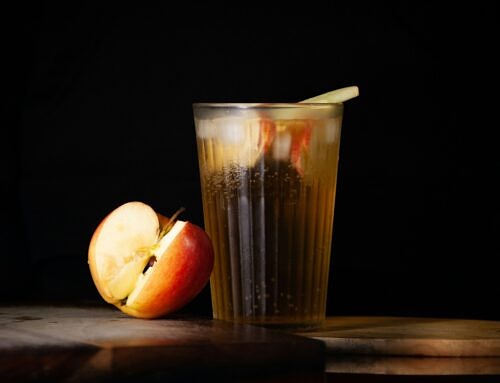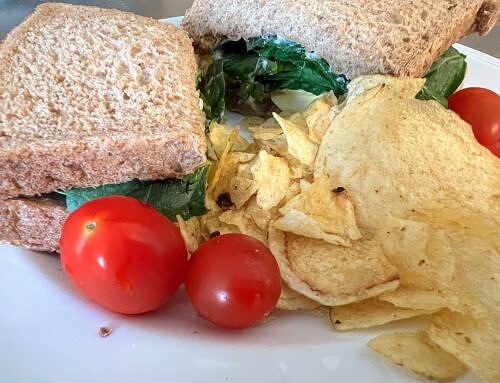
Lactose Intolerance
This is the most frequently used term for people who have problems with dairy. Perhaps because the condition’s profile has been heightened by the widely available lactose-free dairy products on the shelves. However, do you know what it actually means?
Lactose Intolerance is experienced when the body is unable to digest the sugars in milk due to a lack of the enzyme lactase. Lactase is produced by bacteria in the intestines. There are four main types of lactase deficiency: primary, secondary, congenital and developmental.
Primary lactase deficiency
This typically occurs due to a genetic trait, so you may suspect it if you know other family members have this condition.
It may develop as an individual becomes less dependent on milk as their primary food, but the symptoms may not noticed until adulthood.
Secondary lactase deficiency
Secondary lactase deficiency is usually caused by a problem with the small intestine as a result of surgery, illness or medication. Illnesses which may contribute to the condition include ulcerative colitis, Chrone’s disease, coeliac disease and gastroenteritis. This type of deficiency is often temporary, depending on its cause.
As we age we may produce less lactase, which may also cause this condition.
Congenital lactase deficiency
This genetic condition requires both parents to have the affected gene for the child to have this deficiency. It is found in newborn babies causing them to produce very little, or no, lactase.
Developmental lactase deficiency
This may occur in premature infants due to their small intestine not being fully developed at birth. It usually improves as the child grows.
Symptoms
Symptoms of lactose intolerance include:
- Stomach bloating
- Flatulence
- Diarrhoea
- Stomach cramps and pain.
While a large proportion of the global population experience some form of lactase deficiency, it is not all that common in babies. More common is a milk allergy.
Milk Allergy
Also referred to as cows’ milk protein allergy (CMPA), this is a condition whereby the body produces an allergic response when exposed to dairy products.
In the case of babies, this condition can arise in both formula fed infants and breastfed infants. For breastfed infants, the problem lies in the fact that the milk proteins pass through the mother’s body from her own dairy consumption to the baby. This is not insurmountable and by no means does the mother needs to stop breastfeeding – instead she may need to change her own diet and remove dairy products (this will depend on the child’s sensitivity as symptoms may not develop until solid foods are introduced). This was our experience, and like many other family’s we did not get a quick diagnosis. Part of the problem for doctors diagnosing the condition is that there are other issues that may contribute to similar symptoms, and some of those issues are more common than milk allergy. For us, diagnosis was complicated by prematurity.
A further complication with food allergies is that they do not all result in the well-known anaphylaxis. This is because people’s bodies respond differently to allergens, and not all responses are immediate. Milk allergies can trigger igE reactions and/or non-igE reactions:
igE Reactions
These are the classic allergic reactions which can include anaphylaxis. They involve the antibodies of the immunoglobin class E which trigger the release of histamine in response to exposure to the allergen.
The symptoms most commonly associated with igE reactions are:
- Skin irritation: itching, redness, hives, puffiness, eczema
- Gastrointestinal (related to the gut): swelling of the tongue or palate, vomiting, diarrhoea, abdominal pain
- Respiratory problems: runny/congested nose, itchy red eyes, difficulty swallowing, stridor/hoarse cry, breathing difficulties (including wheezing), cough
- Cardiovascular: lethargy, limpness, sudden pallor
Non-igE Reactions
Non-igE reactions are reactions thought to involve special cells within the immune system. This is a more delayed reaction than igE and can be harder to diagnose. In breastfed infants the reaction could be as long as three days after the mother has consumed dairy making it harder to spot direct correlations.
Symptoms most commonly associated with non-igE reactions are:
- Skin irritation: itching, redness, eczema
- Gastrointestinal symptoms: reflux, vomiting, colic, refusing or disliking being fed, loose or frequent stools, redness around the bottom (allergy ring nappy rash), constipation (including straining to pass soft stools), tummy pain, blood or slime in stools
- Respiratory symptoms: congested nose
What Happens if an Intolerance or Allergy is Suspected?
For igE reactions doctors can refer individuals for allergy testing. For non-igE you may be asked to avoid the suspect food for a specified period before reintroduction to confirm any symptoms (a “challenge”). Lactose intolerance may be diagnosed by elimination and reintroduction of dairy, a hydrogen breath test, a biopsy, or a milk or lactose tolerance test.
Lactose intolerance may be managed through the consumption of lower-lactose foods, or specialist “lactose-free” foods – note these are NOT suitable for milk allergy sufferers. There are also pharmaceutical products that can be added to dairy foods to assist digestion.
For milk allergy sufferers the best management is generally avoidance of dairy products. For young non-igE children over the age of 12 months and after six months of no dairy, the milk ladder may be suggested. This allows the gradual reintroduction of dairy foods based on their protein content.
Alternative Nutrient Sources
While milk contains many nutrients, I have chosen just six to discuss here. While the information below shows a few good alternative sources of each of these nutrients (considering realistic portions), they are not the only sources. If the affected person is a formula-fed baby, your doctor and/or dietitian should recommend an appropriate hypoallergenic formula.
And, of course, because the foods listed below are mainly whole food sources they will provide you with a selection of other nutrients too. This will give you even more support for your health, or the health of your child.
Calcium
- Sardines and salmon (including the small bones)
- Cannellini beans
- Kale
- Seeds (including chia, sesame and poppy seeds)
- Almonds
Phosphorus
- Eggs
- Meat and fish
- Liver
- Sunflower and pumpkin seeds
- Brazil nuts
Vitamin D
- Oily fish
- Eggs
- Wild mushrooms
Much of our vitamin D can be sourced by exposing our skin to the sun for a short time each day during spring and summer. Take care to avoid burning. In the autumn and winter it may be helpful to take a vitamin D supplement – consult a suitably qualified professional before taking supplements, especially if you are taking medication or have health concerns.
Riboflavin (Vitamin B2)
- Eggs
- Salmon
- Liver
- Quinoa
- Nutritional yeast
Vitamin B12
- Eggs
- Sardines
- Nutritional yeast (fortified)
- Liver
- Shellfish
Protein
- Meat and fish – like milk these are considered a complete protein sources (they each contain all the essential amino acids).
- Eggs
- Pulses (beans and lentils)
- Nuts and seeds
- Grains (including spelt, oats and quinoa)
Allergy Support Groups/Resources
- Anaphylaxis Campaign: https://www.anaphylaxis.org.uk/wp-content/uploads/2019/07/Milk-Allergy-2019.pdf
- CMPA Support: http://cowsmilkproteinallergysupport.webs.com/
(The latter group has a selection of Facebook groups that affected persons can join ranging from breastfeeding to weaning. There is also an off-topic group for more general parenting and allergy support)
If you are avoiding a food group, you can register with an email service from the FSA who notify you of any relevant product recalls due to mislabelling: https://www.food.gov.uk/news-updates/news/allergy-alerts-news



